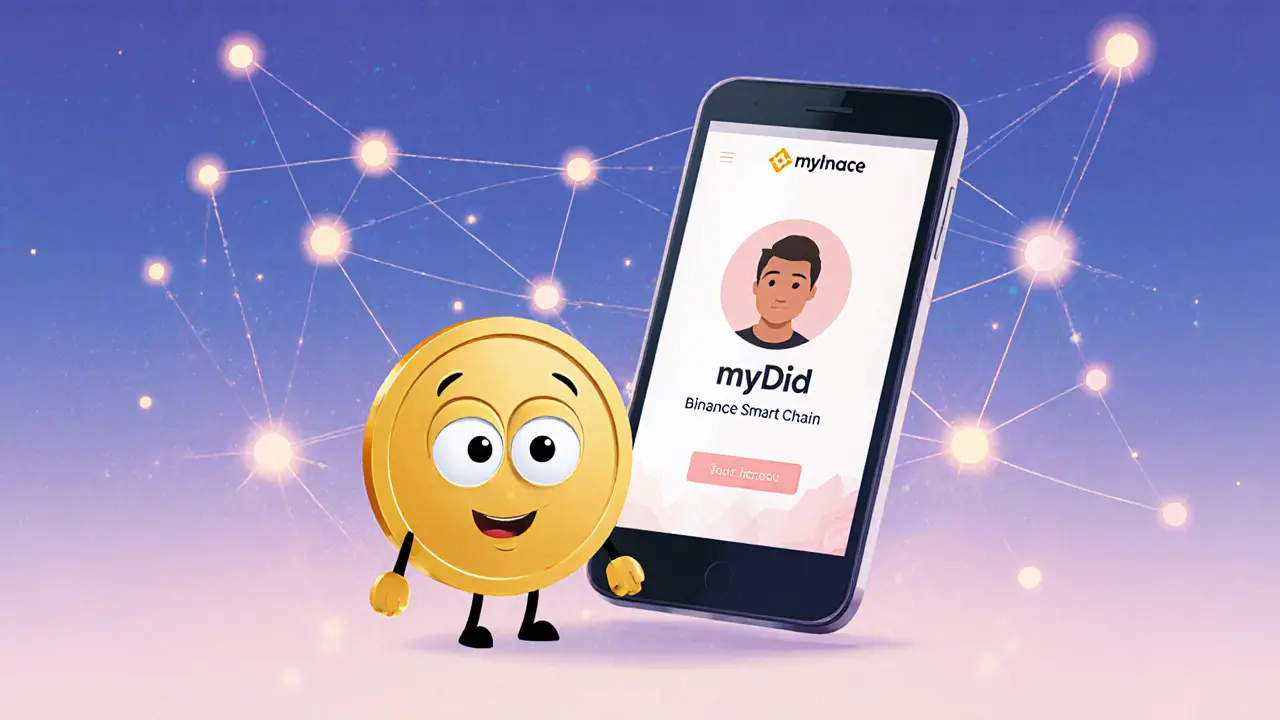myDID Crypto – A Practical Guide
When working with myDID crypto, a decentralized identifier that lives on a public ledger and lets users prove ownership of a digital identity without a central authority. Also known as myDID, it combines cryptographic keys with a human‑readable string to create a portable, verifiable identity. This approach falls under the broader concept of decentralized identity, which aims to give individuals control over their personal data. A close sibling is self‑sovereign identity, a model where the user, not an institution, grants and revokes access to their credentials. Understanding these three entities—myDID crypto, decentralized identity, and self‑sovereign identity—helps you see why the space is gaining traction among developers, fintech firms, and privacy advocates.
myDID crypto runs on top of a blockchain, which supplies the immutable ledger that records each identifier, its public key, and any associated service endpoints. Because the ledger is tamper‑proof, anyone can verify a DID without contacting a third‑party registry. This trust layer enables practical use cases: crypto wallets can embed a DID to streamline KYC, decentralized apps (dApps) can verify usernames without passwords, and supply‑chain platforms can tag products with a verifiable owner. In short, the blockchain provides the security backbone that lets myDID crypto function as a universal digital passport.
Key Components, Benefits, and Risks
Beyond the technical stack, myDID crypto introduces several strategic benefits. First, it reduces reliance on centralized identity providers, cutting costs and lowering the attack surface for data breaches. Second, it empowers users to reuse the same identifier across many services, improving convenience while preserving privacy through selective disclosure. Third, developers can build interoperable identity solutions because the DID specification is open and supported by multiple standards bodies.
However, the model isn’t risk‑free. Because a DID is linked to a cryptographic key, losing that key means losing access to the identity—much like misplacing a wallet with cash inside. Regulatory frameworks also play a role; cryptocurrency regulation in regions like Europe and the US is still catching up with decentralized identity, creating uncertainty for enterprises that want to adopt the technology at scale. Finally, the public nature of blockchain data can unintentionally expose metadata about user activity if not handled carefully.
Putting these pieces together, you can see three core semantic relationships: myDID crypto enables self‑sovereign identity, blockchain provides the trust layer for myDID crypto, and regulators influence the adoption of decentralized identity solutions. Each relationship shapes how the technology is built, deployed, and governed.
Below you’ll find a curated collection of articles that dive deeper into these topics. From detailed coin analyses and exchange reviews to guides on staking, airdrops, and regulatory impacts, the posts cover the full spectrum of what you need to know about navigating the myDID crypto ecosystem and the broader world of decentralized finance.
myDID (SYL) cryptocurrency explained: purpose, tech specs, and market outlook
Learn what myDID (SYL) crypto coin is, its technical specs, role in digital identity, market data, how to buy it, and if it's a good investment.
- 15
- Read More
